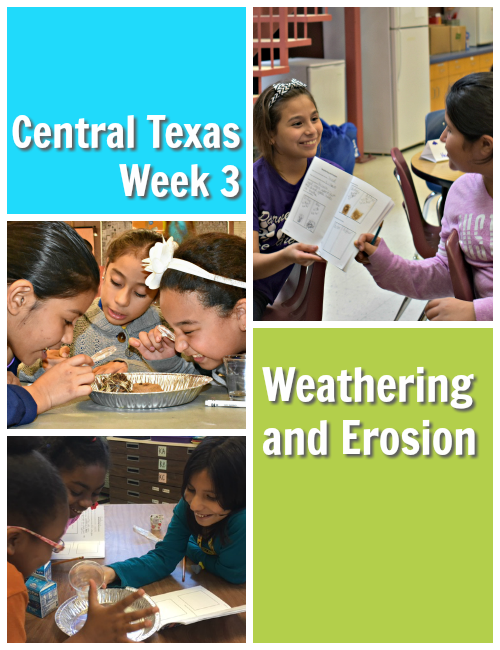Weathering and Erosion
This week, Girlstart students (and future geologists!) reviewed physical weathering, chemical weathering, and erosion before putting different types of soils to the test!

Before beginning their activity, students worked together to review the difference between chemical and physical weathering. Tables volunteered their ideas, then STEM Crew leaders provided an antacid tablet for girls to observe. Students watched the tablet dissolve in a glass of water and create bubbles as an example of a chemical change. Crew leaders explained that the dissolved tablet had undergone a chemical change. Minerals in rocks can also dissolve – a common example of chemical weathering. On the other hand, physical weathering does not lead to a change in a rock’s chemical composition.

Girls were then given soil, soil with grass, and sand. Using these materials and a paper cup, students created landforms and weathered them away with water. Because of the loose grains, students found that their sand landforms weathered away more quickly than the other soil types. Finally, students evaluated the significance of their newfound knowledge as geologists. What applications can you think of for this knowledge? Some student answers included protection of homes in floodplains and prediction of landform movement over time.

